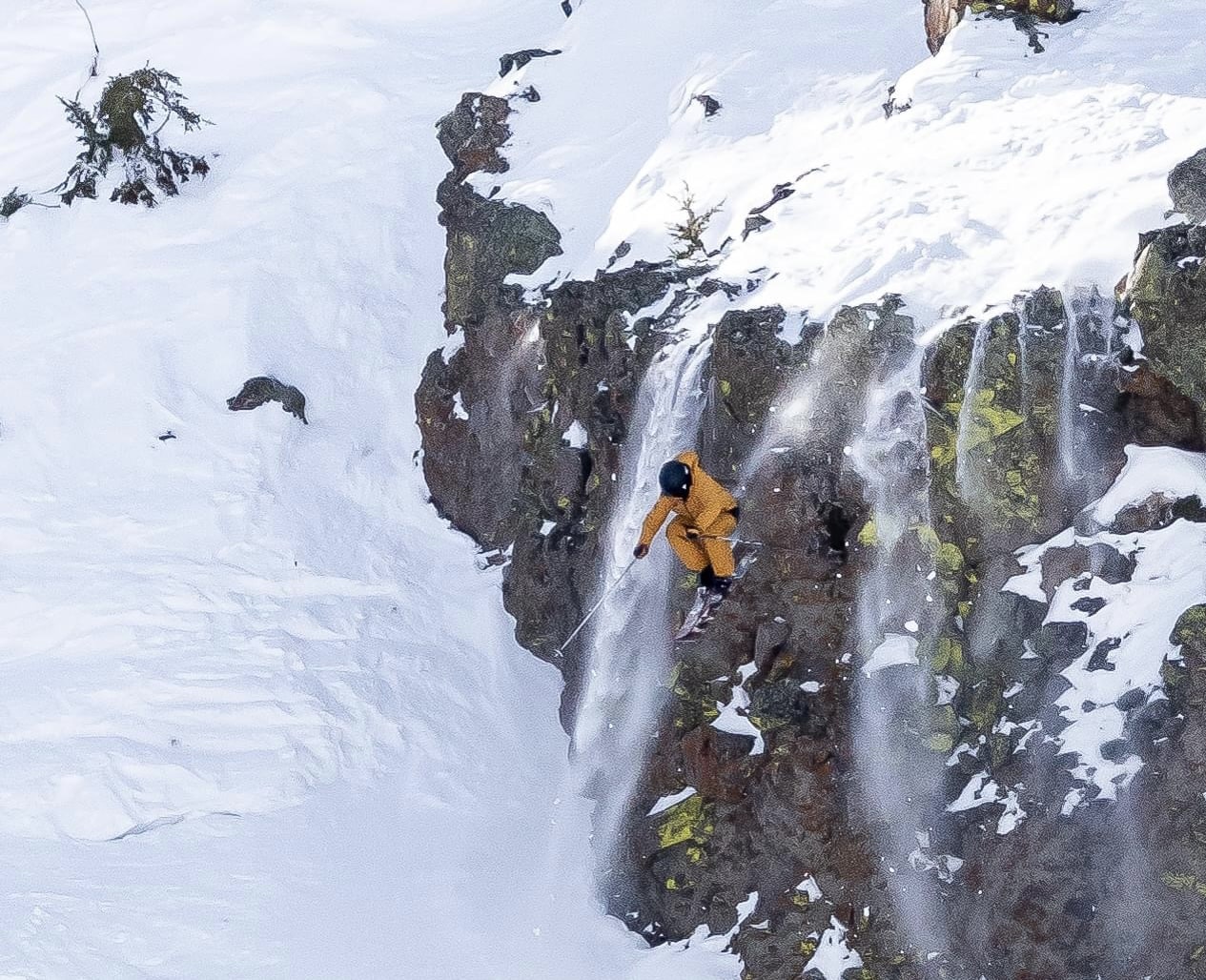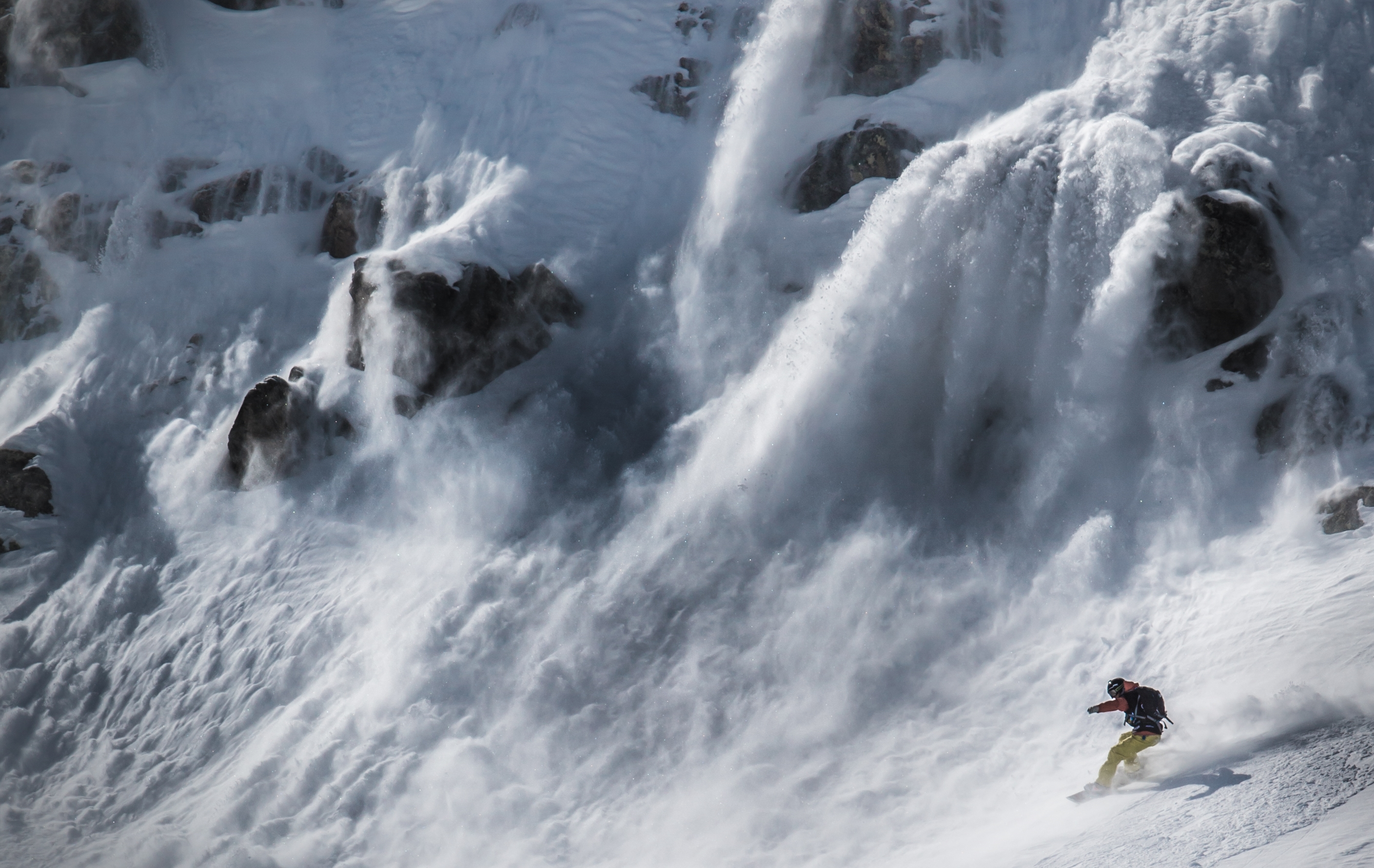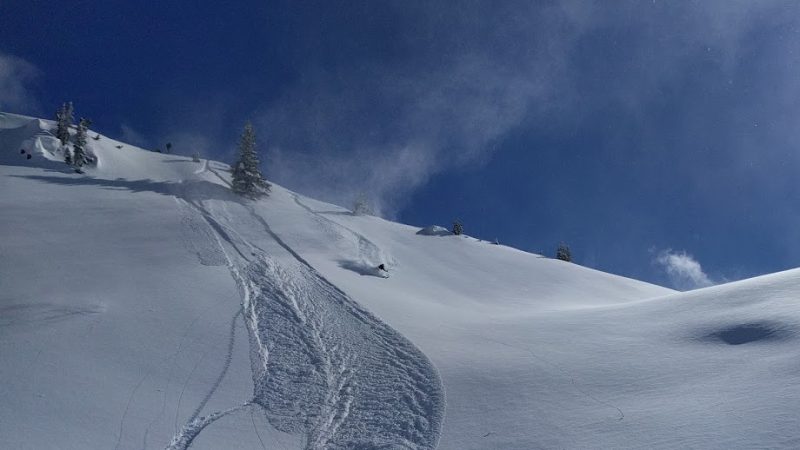
You have more than likely seen it and maybe even experienced it, whether in a ski movie or photograph, in person from a distance, or right below your own two skis, sluff is quite a common occurrence while on the mountain. That layer of fluffy snow that glides beside you as you turn when conditions are steep and deep. The beautiful fresh powder that cascades off of the rocks when a skier or snowboarder is about to send it down a cliff.
Sluff is a relatively small avalanche of loose snow on top of the snowpack that usually occurs on steep terrain with fresh snow. Although small in starting size, it can rapidly grow as it descends, picking up more snow and power along the way. When this happens, it can sweep even the most experienced skier or rider off of their feet. This can pose serious consequences, especially when riding in or above terrain traps like cliffs, trees, rocks, gullies, or creeks.

There are ways to mitigate these dangers while on the mountain, called sluff management, a term used to describe smartly and safely navigating through terrain in which getting swept off your feet could be potentially hazardous. Avalanche Canada recommends “skiing short pitches and pulling over to safe spots to escape the flow while it passes.”
In the video below, you can see Miles Clark racing his sluff in the first half of the clip before airing out over it towards the end. If you are unable to cut away and pull over safely, try crossing through your sluff with speed at a downward angle, or hit the gas and go faster to beat the run-out.
The one distinct difference between sluff and an avalanche is that sluff slides consist of loose snow only on the surface, while the most common avalanches are slabs that penetrate down into the snowpack. Even a small-sized slab avalanche has a much greater chance of burying someone than sluff.
While small compared to a typical avalanche that most people know or have seen, encountering sluff and not properly managing it could cause serious issues for those involved. Recreate safely and be conscious of new snow and the avalanche forecast in your area before venturing into the backcountry or any unknown, steeper terrain.
